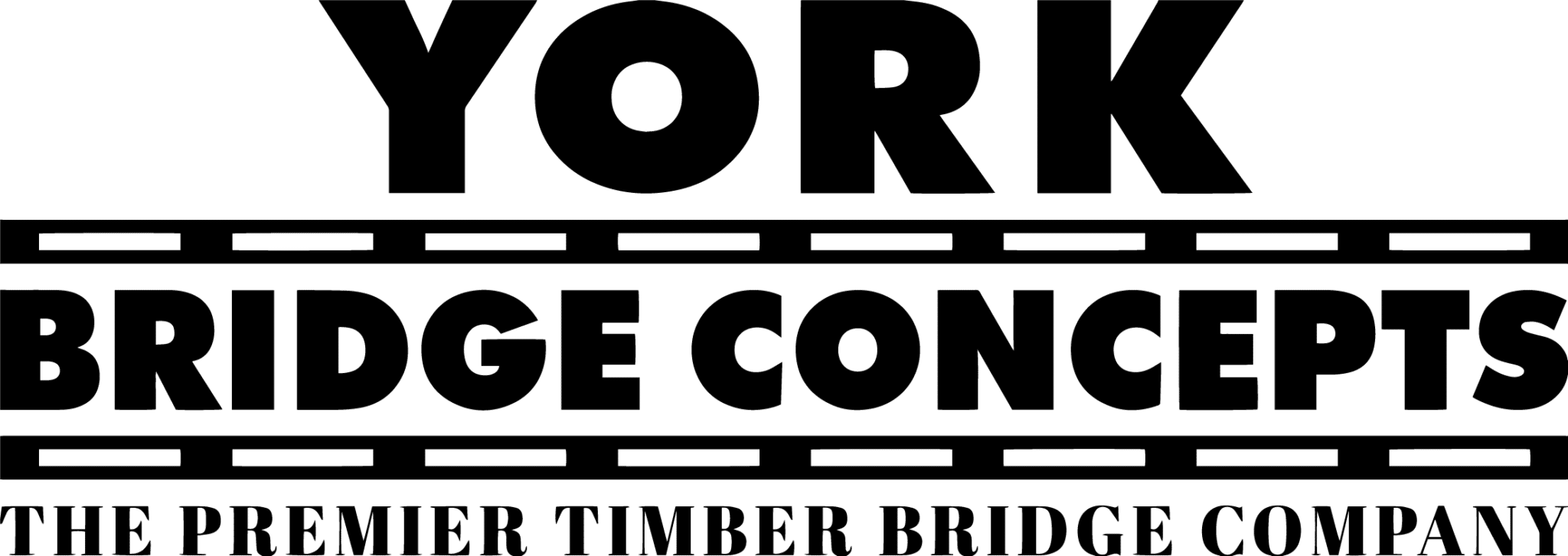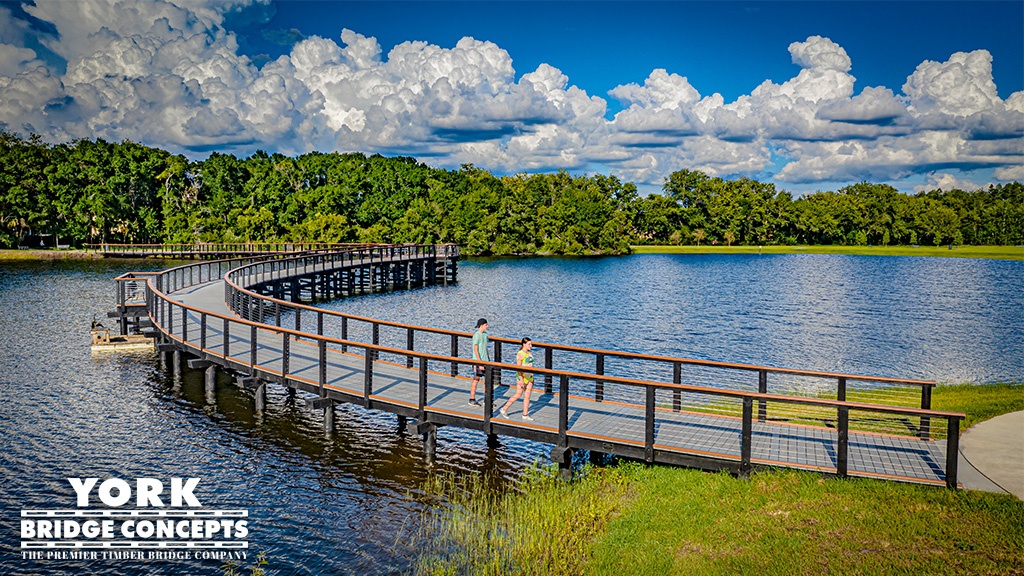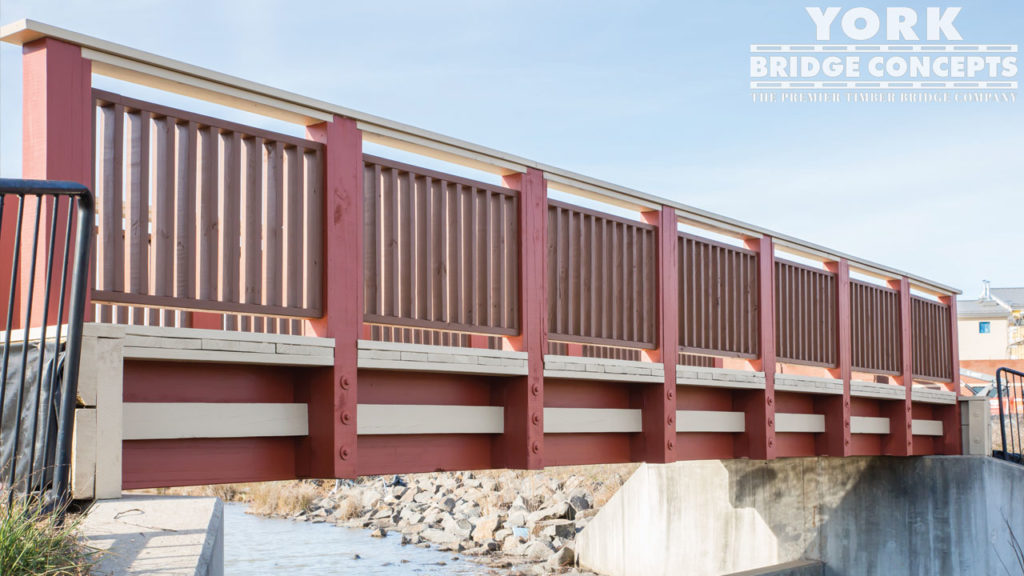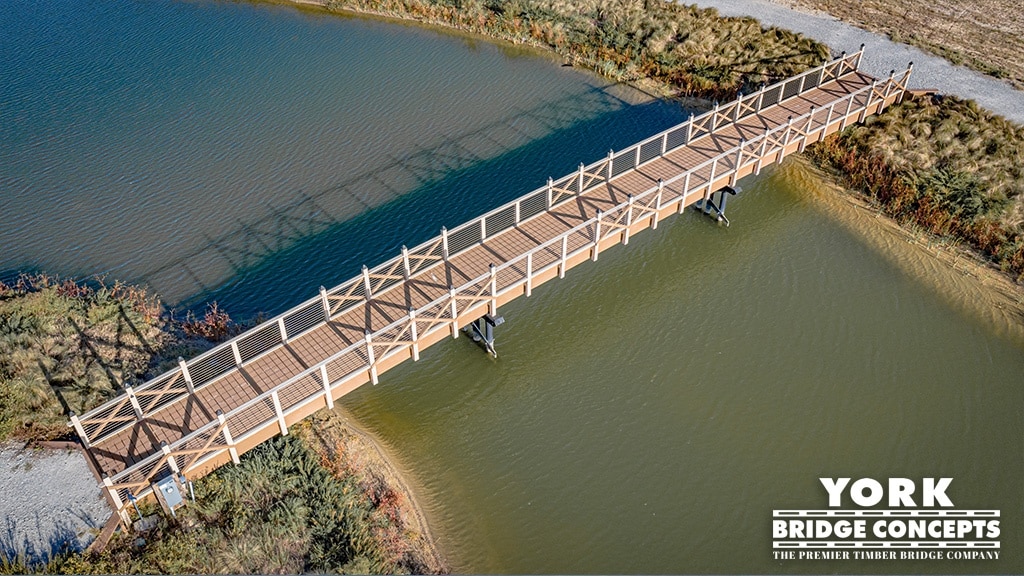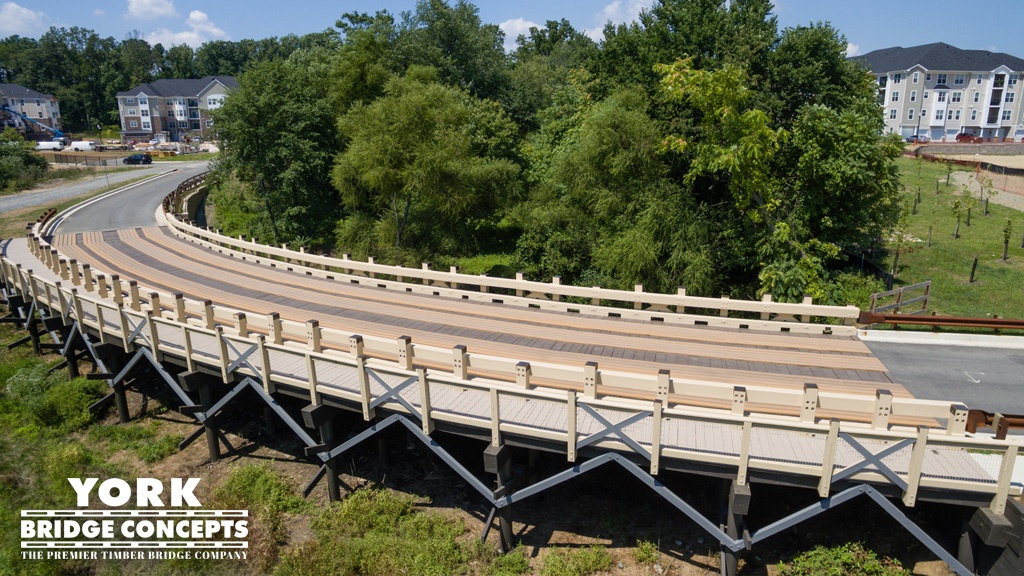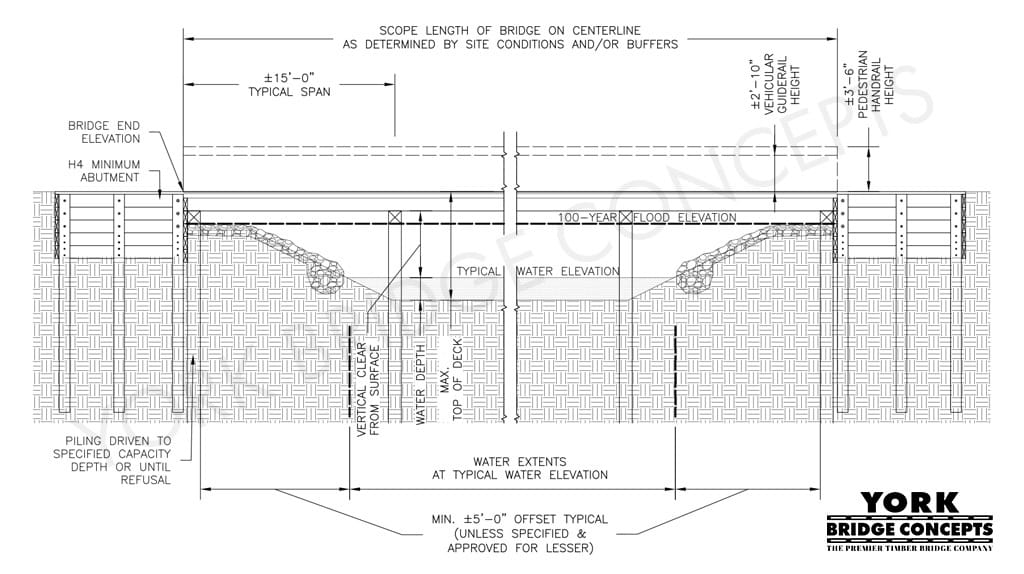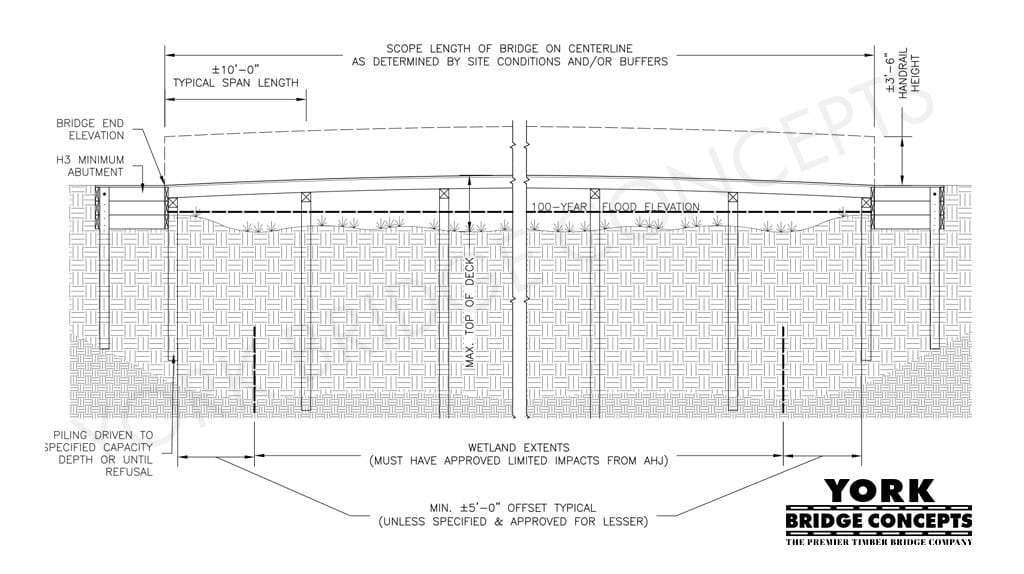mastering timber bridge span Types
Creative Scoping, Design, & Development
When assessing a crossing environment, it's crucial to understand the diverse array of spanning solutions available, each tailored to the specific conditions of the crossing at hand. In the realm of Timber Bridges, there are five primary categories of spanning solutions: Repetitive Span Types, Short Span Types, Free Span Types, Multiple Span Types, and Multiple Long Span Types – all of which will be elaborated on later.
Selecting the optimal spanning solution hinges on the unique conditions of the crossing, which, given the multitude of potential scenarios requiring a timber bridge, can be challenging to categorize. Nevertheless, we embrace challenges with enthusiasm. The key factors influencing spanning solutions in a crossing include environmental buffers, topographic site characteristics, limits of work or impacts, jurisdictional allowances, property easements, flood event conditions, and waterway/waterbody extents.
Above all, the most valuable insight for evaluating a crossing environment lies in depicting the conditions necessitating a bridge. What does this entail? It means we've worked with everything from pictures, surveys, grading plans, GIS maps, hand sketches, and more. In essence, the more information provided, the better – but even if you only have a picture and a dream, we can work with that. Now that you have a grasp of the basics, let's delve into the defining details.
Spanning Solutions with a Timber Bridge
How do you define the word span? Some define it as the bridge from end to end and others understand it as the clear between foundational supports. Neither is wrong, however, the overall length of a span type can have dramatic effects on design, construction, and budget. In this webinar, we’ll outline all the span types a timber bridge offers and the key conditions that help define the scope. We will also narrow in on one of our most popular solutions, present a project case study, and discuss how these principles can assist your projects.
Repetitive Span
Unleash the power of repetition with our meticulously designed repetitive spans. Achieve structural integrity and visual continuity, creating a harmonious flow in your bridge design.
A series of bridge spans built on equally spaced pile bent foundations. Typically measuring +/- 10’ for Pedestrian Bridges and +/- 15’ for Vehicular Bridges, however, the span dimensions will ultimately be determined by the design & engineering requirements for the proposed bridge live load (i.e. who and what will be used). In addition, you’ll find that repetitive span bridges are designed with standard dimensional lumber or rough-sawn timbers.
Short Span
A single bridge span built with rough sawn timber between two abutment foundations. The term ‘short’ is in reference to the timber stringer structure which limits lengths to 26’ or less.
Short Span Vehicular Bridge
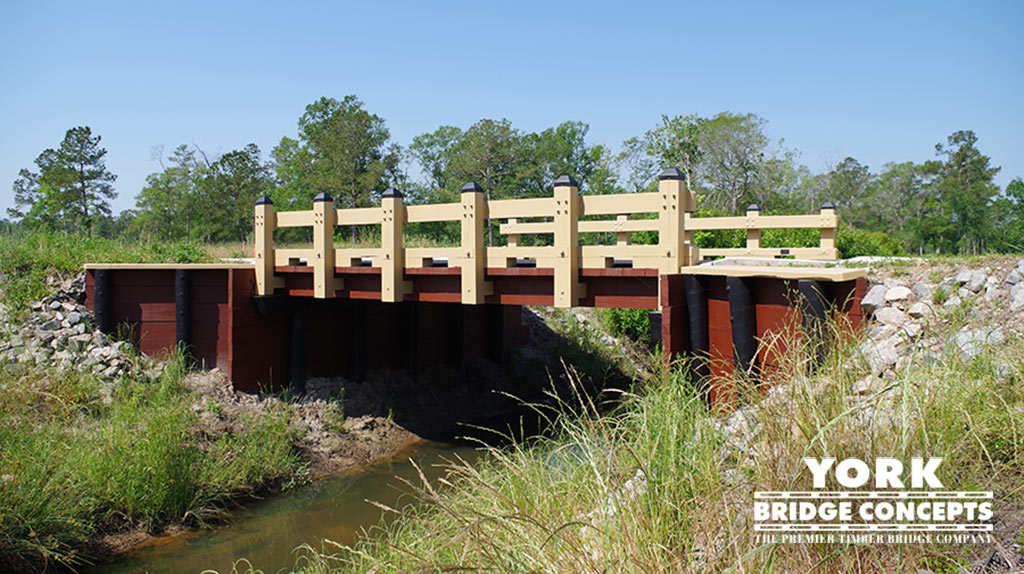
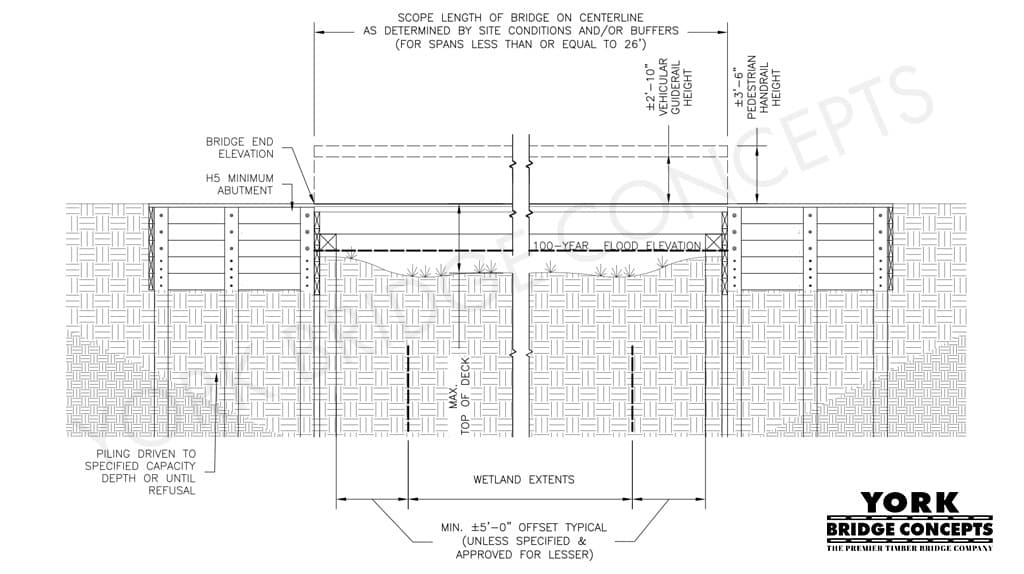
Short Span Vehicular Wetlands Crossing
DOWNLOAD PROFILES
Short Span Pedestrian Bridge
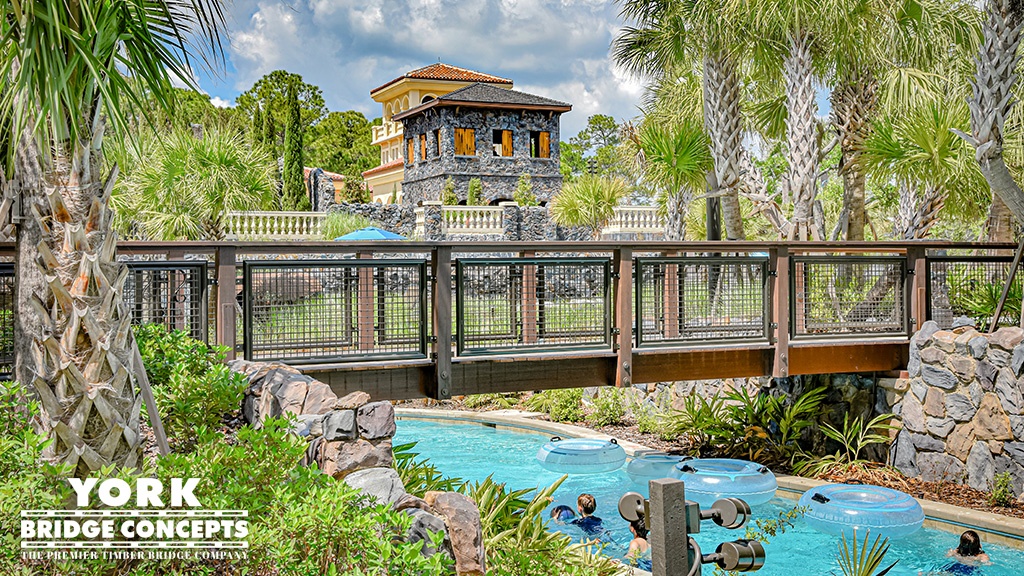
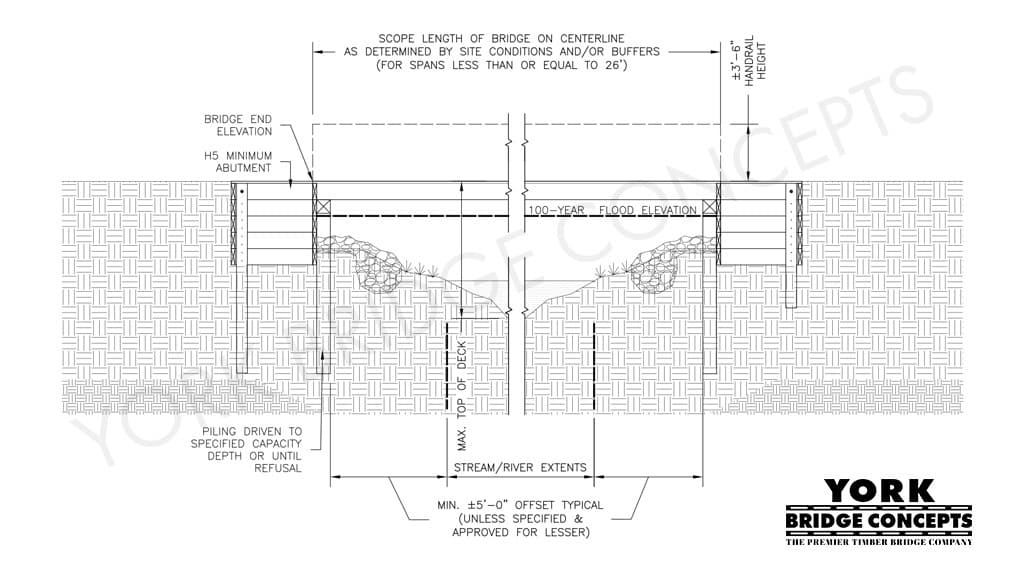
Short Span Pedestrian River / Stream Crossing
DOWNLOAD PROFILES
Free Span
A single bridge span built with Glue Laminated Timber between two abutment foundations. Due to the use of Glue Laminated Timber for the structural bridge stringers, single spans are able to stretch up to 100 linear feet with greater lengths reviewed on a case by case basis. The most economical length would be around 80 linear feet. The term “Free” is in reference to the large clearance that can be achieved between abutment foundations. Typically, a Free Span is selected for lengths greater than 26’ that require or are best without any impacts within the crossing environment. Although Free Spans have been used for shorter spans that would benefit from the aesthetic or strength that Glued Laminated Timbers inherently provide.
Free Span Vehicular Bridge
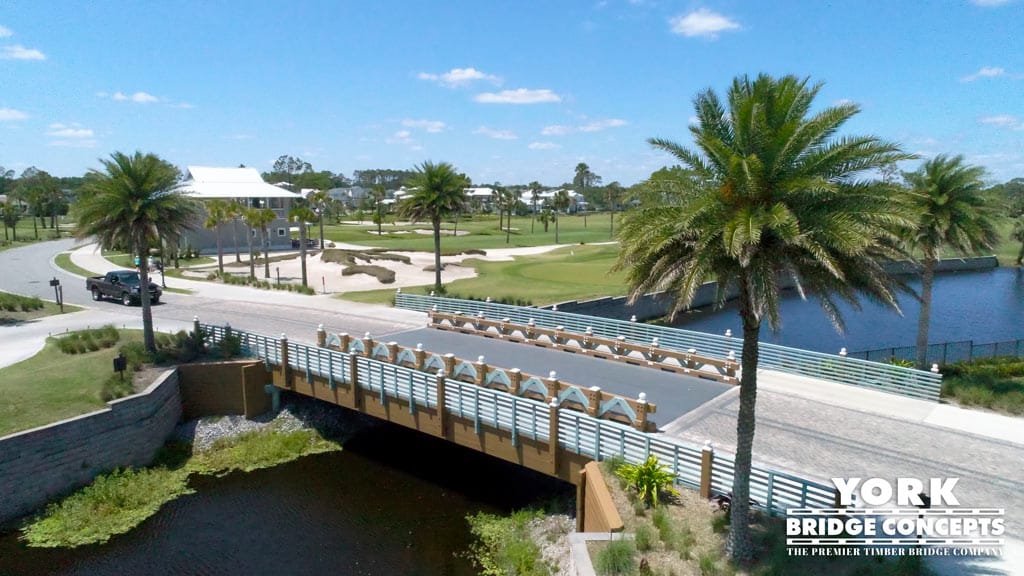
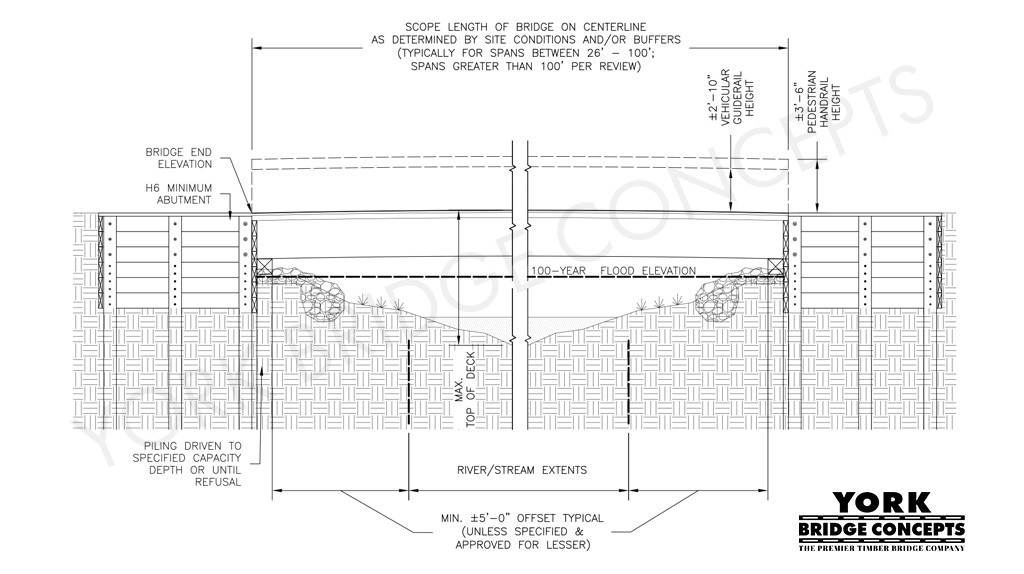
Free Span Vehicular River / Stream Crossing
DOWNLOAD PROFILES
Free Span Pedestrian Bridge
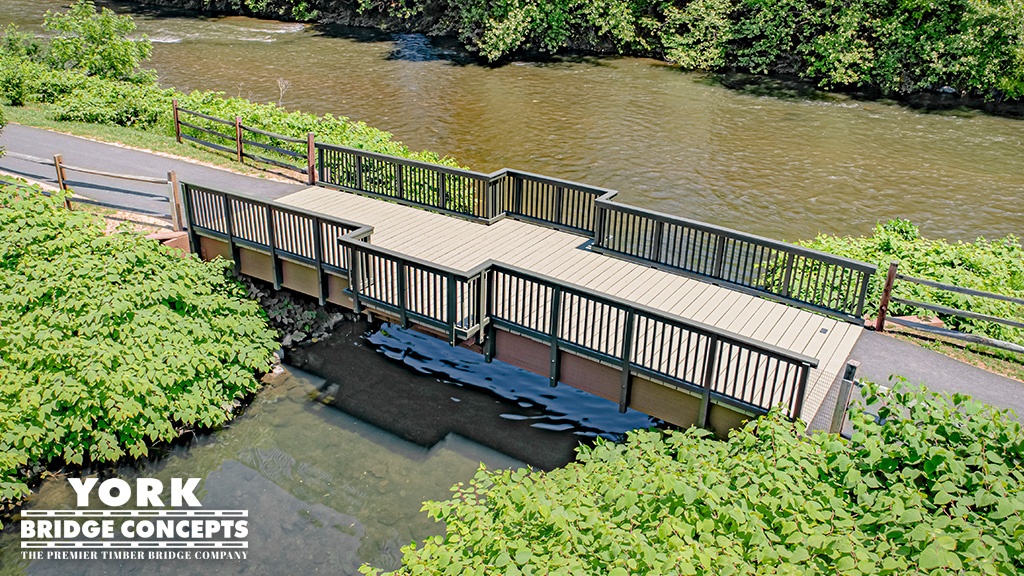
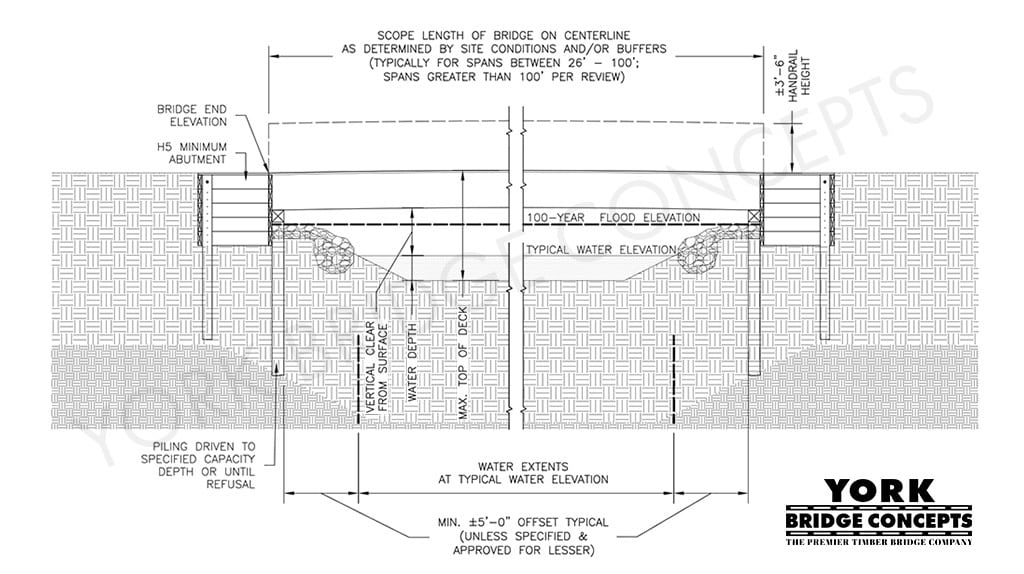
Free Span Pedestrian Canal Crossing
DOWNLOAD PROFILES
Multiple Span
The standard multiple span uses one longer free span section, usually over the main water channel, with shorter, repetitive span approaches. A single bridge can include many variations like repetitive span, short span, and free span sections to achieve the best-case scenario for the client, use, and environment. A Multiple Span bridge can utilize dimensional lumber, dimensional heavy timber, and Glued Laminated Timber, as it pertains to the designed spans. One of the most common uses for a Multiple Span bridge is to reduce the overall length of a Free Span to facilitate the required clear and utilize Repetitive Span approaches for the remainder of the length, providing feasibility in construction techniques and client budget.
Multiple Span Vehicular Bridge
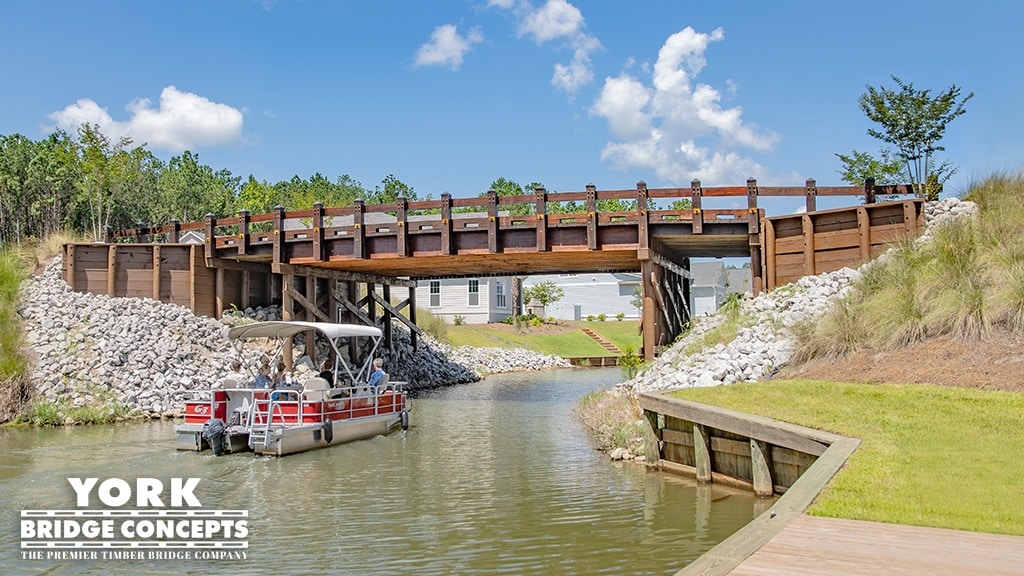
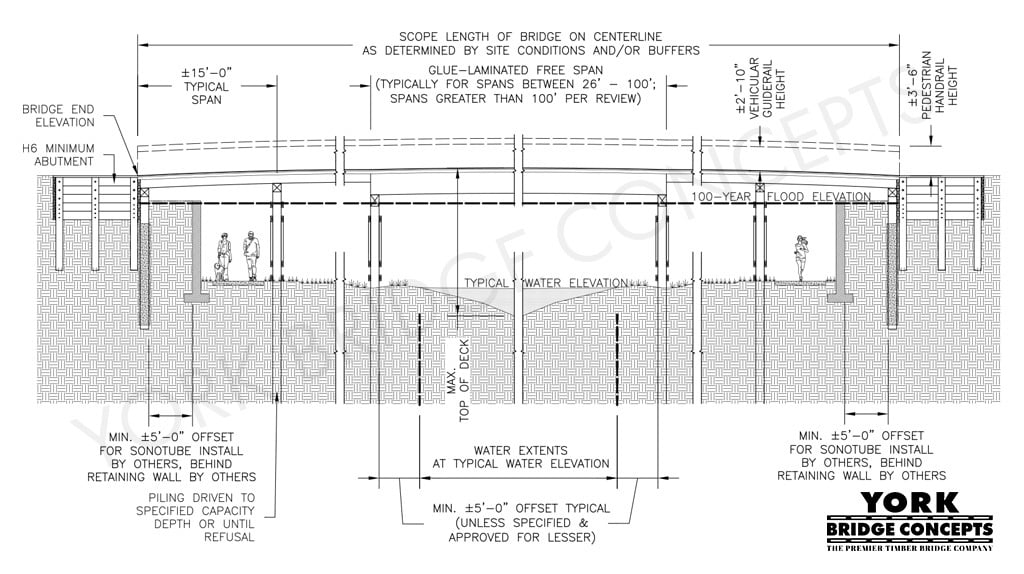
Multiple Span Vehicular Designed Environment Crossing
DOWNLOAD PROFILES
Multiple Span Pedestrian Bridge
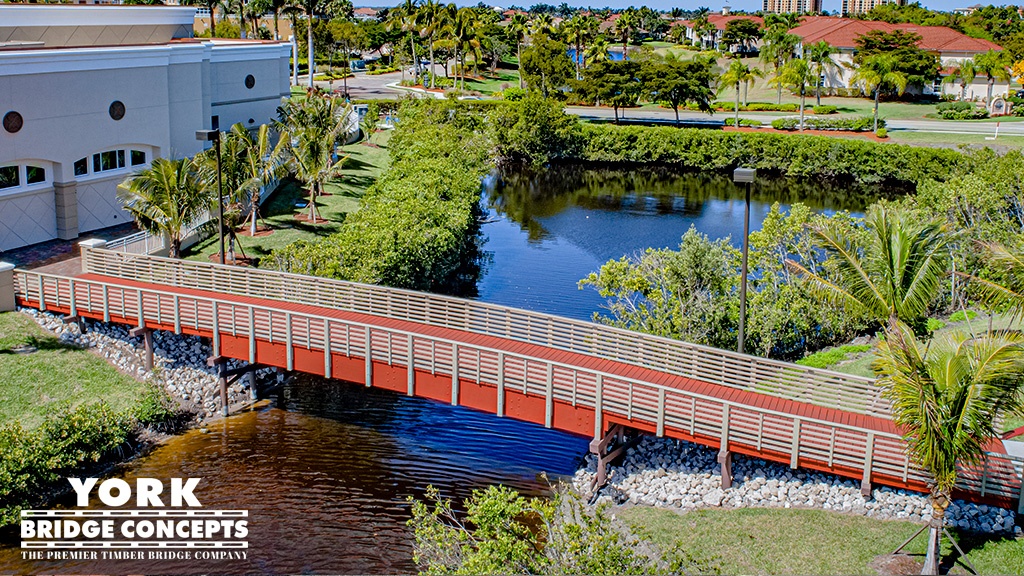
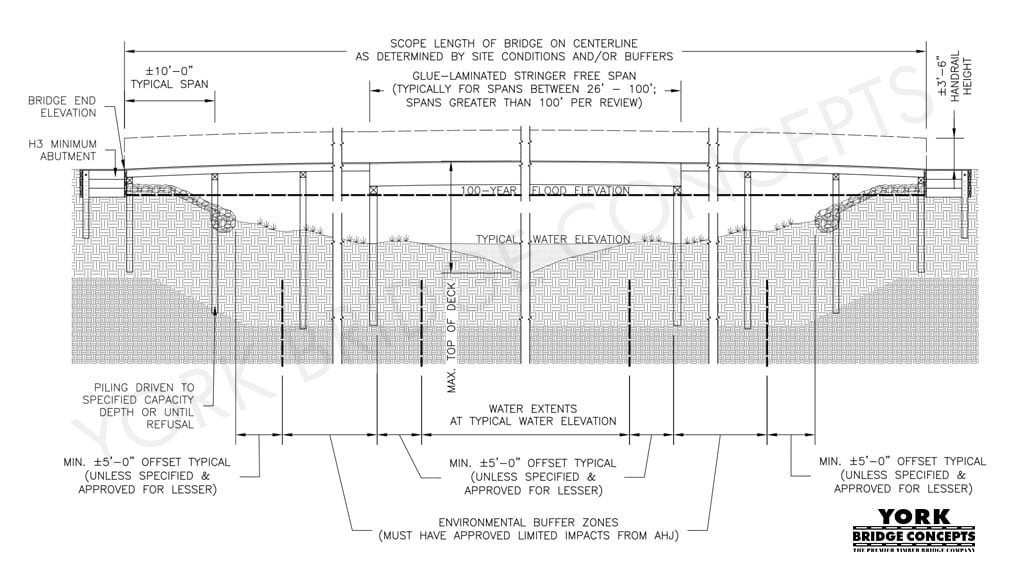
Multiple Span Pedestrian Sensitive Environment Crossing
DOWNLOAD PROFILES
Multiple Long Span
A series of bridge spans built with Glue Laminated Timber on varying or evenly spaced pile bent foundations between abutments, to include a combination of spans commonly defined as free spans that are customized to the crossing environment. Typically, a Multiple Long Span is selected for a crossing requiring more than one span with lengths greater than 26’ without need or accommodation for short spans or repetitive spans approaches. Most commonly, Multiple Long Spans have been used for crossing environments with increased heights and/or lengths, to reduce piling bent foundations and maintain a cohesive profile without the demands of a long free span or the rigor of a multiple span.
Multiple Long Span Vehicular Bridge
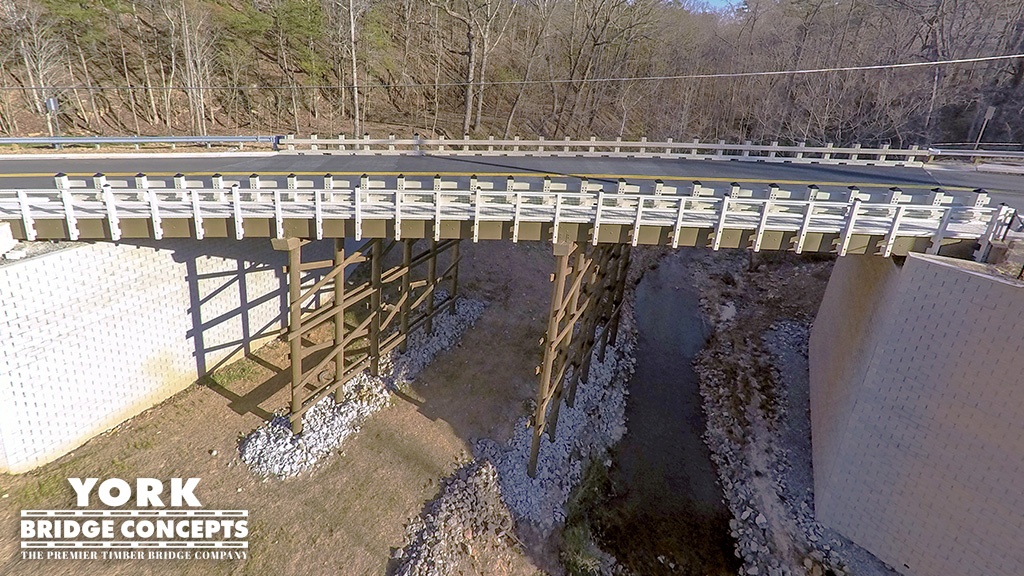
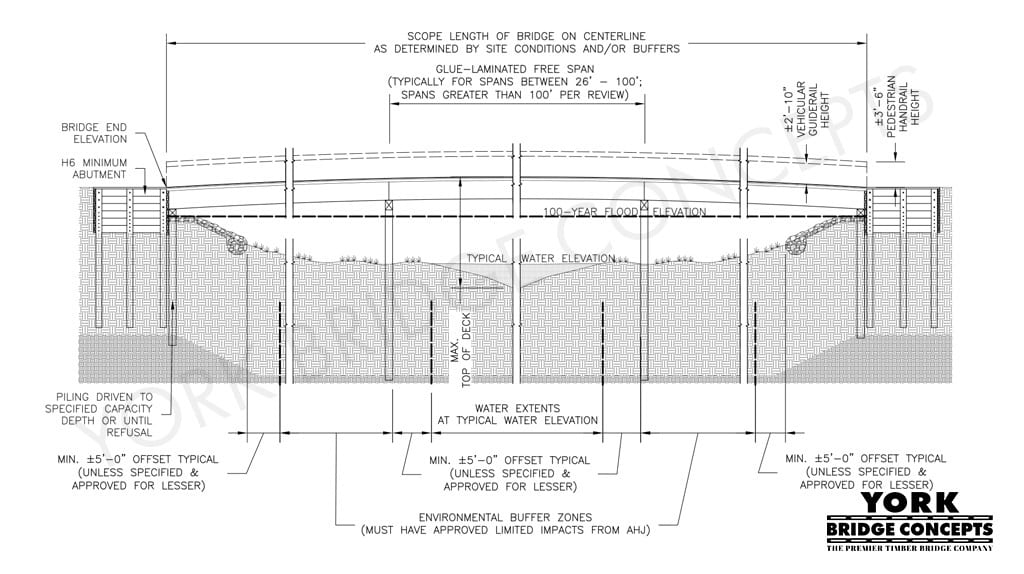
Multiple Long Span Vehicular Sensitive Environment Crossing
DOWNLOAD PROFILES
Multiple Long Span Pedestrian Bridge
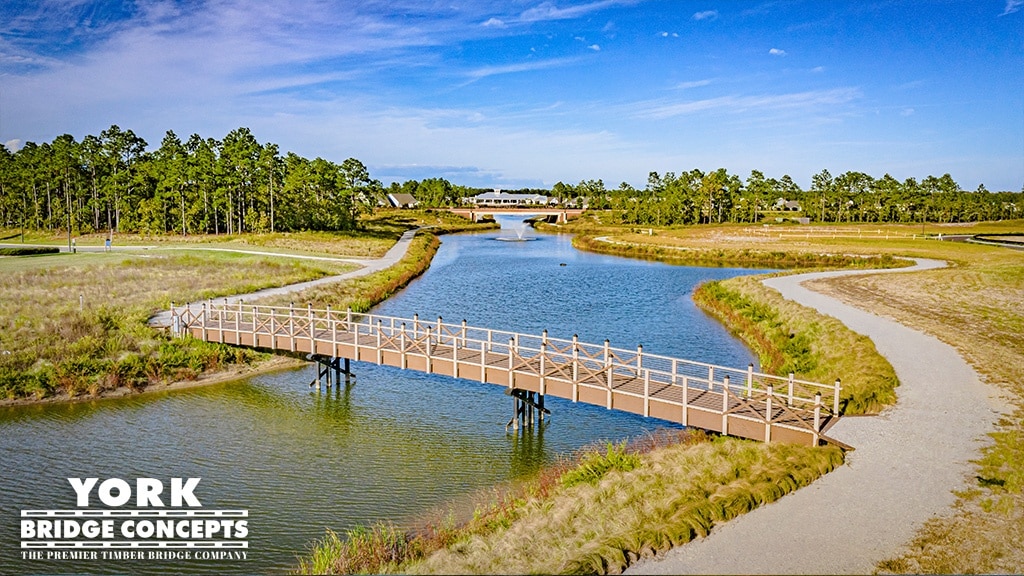
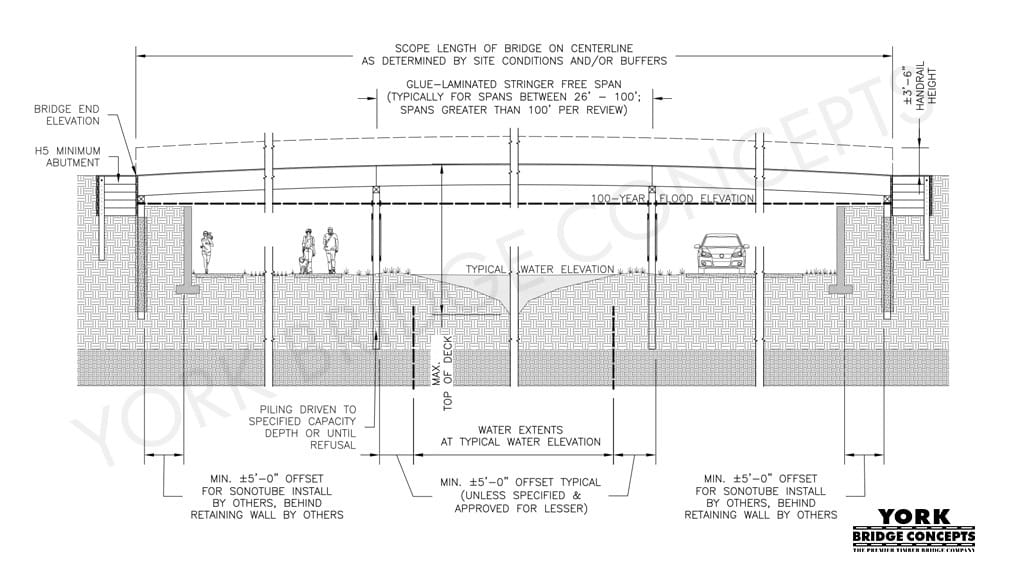
Multiple Long Span Pedestrian Designed Environment Crossing
DOWNLOAD PROFILES
Why Choose york bridge concepts for your next project
-
Unparalleled Expertise: With decades of experience, our team of experts brings unparalleled knowledge and skill to every project.
-
Customization: Your vision is our inspiration. We work closely with you to tailor timber bridge spans that meet your unique specifications.
-
Sustainable Solutions: Embrace environmentally-friendly options with our commitment to sustainable timber sourcing and construction practices.
-
Durability: York bridges are built to last. We ensure longevity without compromising on the natural beauty of timber.
-
Aesthetics and Functionality: Striking the perfect balance between aesthetics and functionality, our timber bridges are a testament to meticulous design.
Create Your Legacy Today
Discover the intersection of strength, durability, and environmental responsibility with York Bridge Concepts. Let's build a bridge to the future together.
